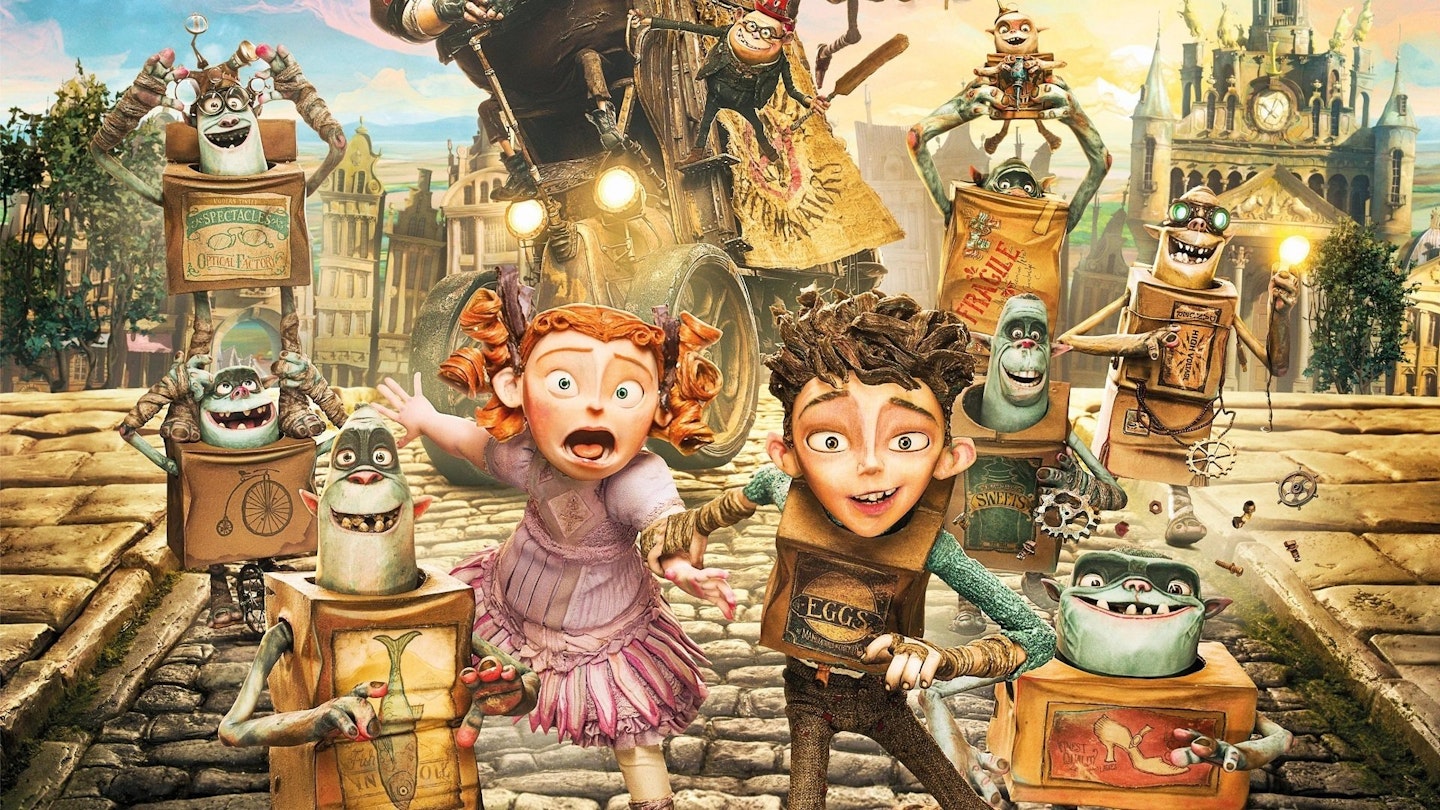Laika, the animation studio behind Coraline and ParaNorman, is back with The Boxtrolls. Adapted from Alan Snow’s book Here Be Monsters, it’s a mad, funny, charming adventure about beasties who live beneath the streets of the strange town of Cheesebridge. Misunderstood and maligned, they eventually have the chance to prove they’re more than just sewer-dwelling rubbish collectors. Here, directors Anthony Stacchi and Graham Annable discuss their toughest scene, the quest to find the perfect voices and how to make puppets waltz in stop-motion...

“The first step after we decided to adapt the book is to start the script,” says Stacchi. “The screenplay goes through many iterations, just like everything we’ve worked on.” Another big part of generating the plot and characters is the storyboard team, who have a key role to play in every section of the film’s genesis. “We almost always launch storyboard artists with script pages, but occasionally it's even just an outline or a description of the sequence,” says Annable. “We don't for example, need someone to write a rooftop chase in script pages, or a dance sequence.”
And the storyboard team can also help figure out how certain character moments are played. “The boards are really where it happens because you're figuring out the gaps in the story, you're also getting a blueprint for how you're going to shoot it, what's the angle, close-up, shots etc,” explains Annable. “But you're also taking the first steps towards refining the characters' performances. The artists may have some gestures that the characters are doing or, in the case of Snatcher and Eggs' fight at the end, we wanted to have that feel like these two are in a desperate struggle. So they start to grab each other's faces, which is a big deal when you're making the faces one at a time, and build in all that stuff. Then when we worked with Sir Ben [Kingsley] and Isaac [Hempstead Wright], we told them they had to do the lines as if someone was pressing on their face!”
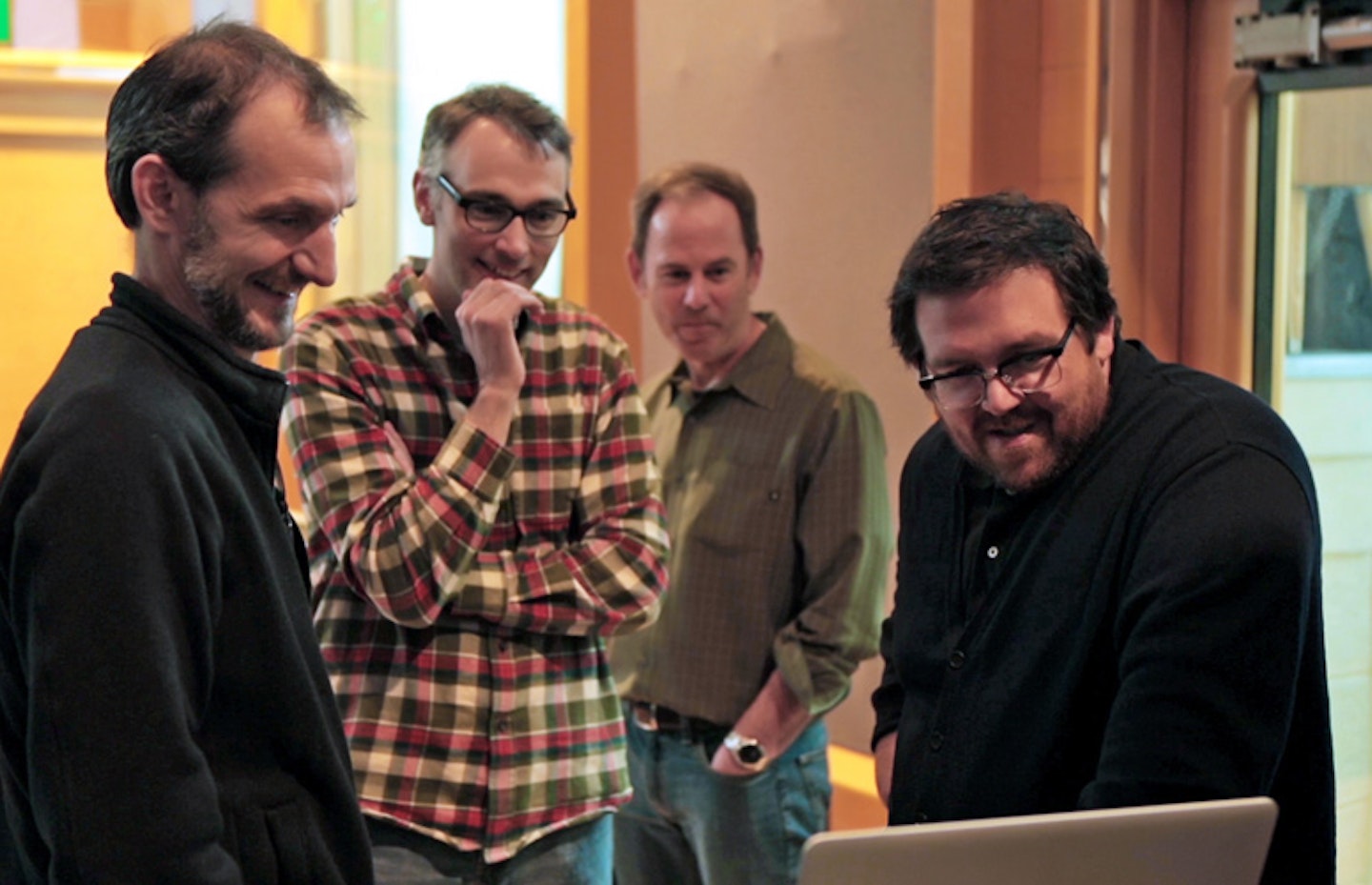
(L to R) Director Anthony Stacchi, Director Graham Annable, Producer David Ichiok and Nick Frost. Photo: LAIKA, Inc.
Though the final product also boasts performances from Elle Fanning, Simon Pegg, Nick Frost and more, the initial voices came from elsewhere. “When we're storyboarding, our editor, Edie, is cutting the storyboard drawings together and we're recording just people in the studio - there was a woman who worked in the puppet fabrication department who did a great Eggs - and cut the images together with that rough dialogue to see how it felt,” says Annable. “And that would give us a little bit of insight into how to direct Sir Ben and Simon etc.”
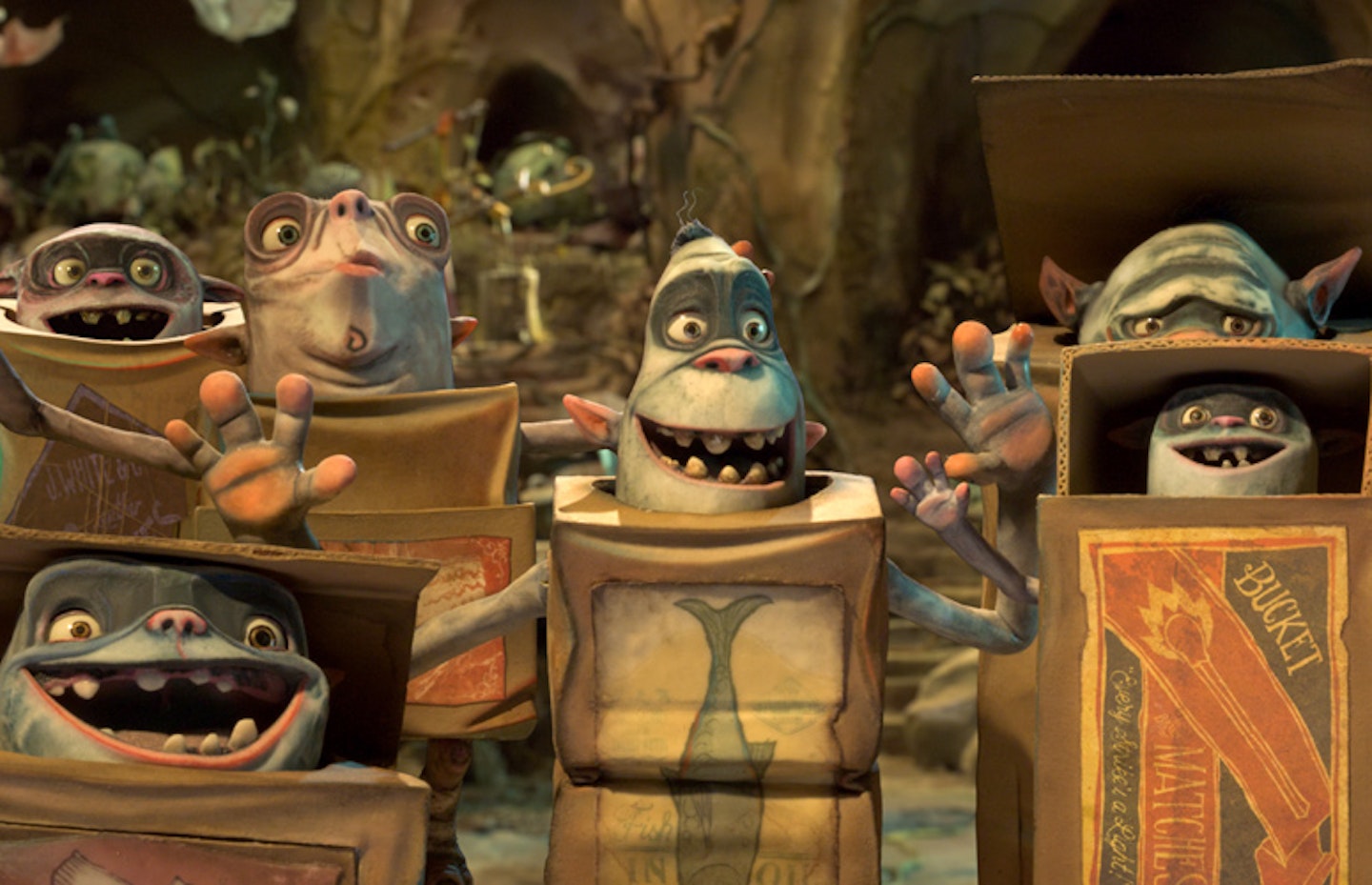
Photo: LAIKA, Inc.
For the Boxtrolls themselves, who have a very specific way of communicating, the directors turned to voice artists Dee Bradley Baker and Steve Blum to develop the ideas. “That was a real process, because at the beginning of it, we thought we'd have a specific language for the Boxtrolls, that they were going to talk and you might even need a dictionary by the end of the film,” recalls Stacchi. “But it didn't quite fit. It felt too alien, and so working with Dee and Steve, they were able to take it to a level of simplification where it really became emotive sounds and gestures that they suggested with their voices.”
The creatures’ voices were inspired to some degree by Star Wars’ Jawas and the beasts from Gremlins, and came from Stacchi and Annable explaining to Baker and Blum what they were after. “We just wanted to get the emotion and frustration of the characters,” says Annable. “When we had hours of the stuff, we cut together a minute or so of stuff and played that for them every time we recorded with them and it would get them back into the mood.”
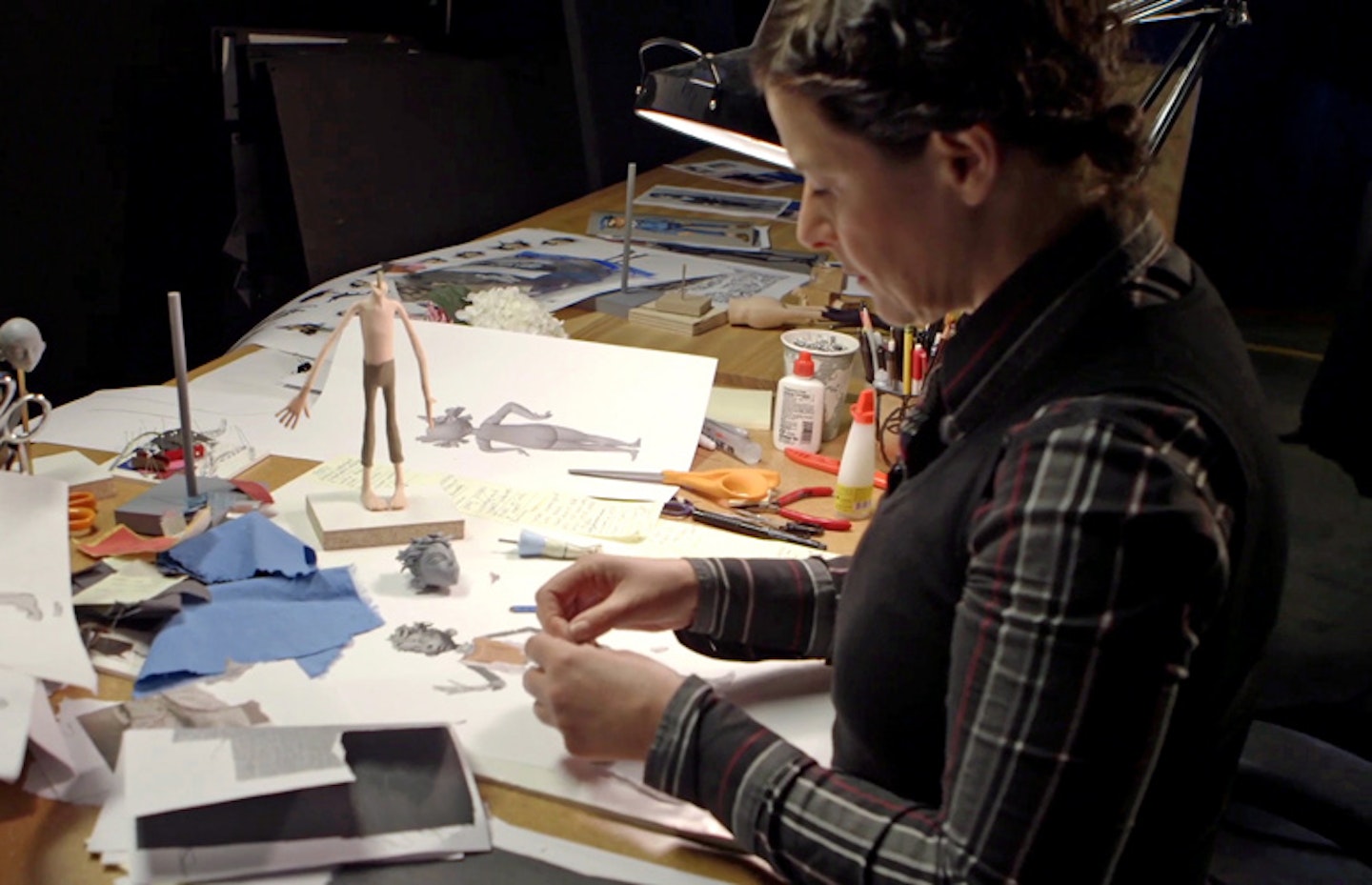
Costume Designer Deborah Cook works on one of Egg’s outfits. Photo: LAIKA, Inc.
The look of the film borrows from classic literature but is more directly drawn from the source. “It's inspired by the Dickensian quality of Alan Snow's book,” says Stacchi. “Alan Snow has worked at Aardman and knows about stop-motion. You just know when you're reading it that all the Dickensian stuff, the underground world, is perfect for stop-motion. It has all this complexity that lends itself to being hand-crafted. And we looked for specific artists that we knew in the company. Nine times out of 10 you come up with the design stuff but the team is made up of the people that you know who you want to work on it, because we have a shorthand.”
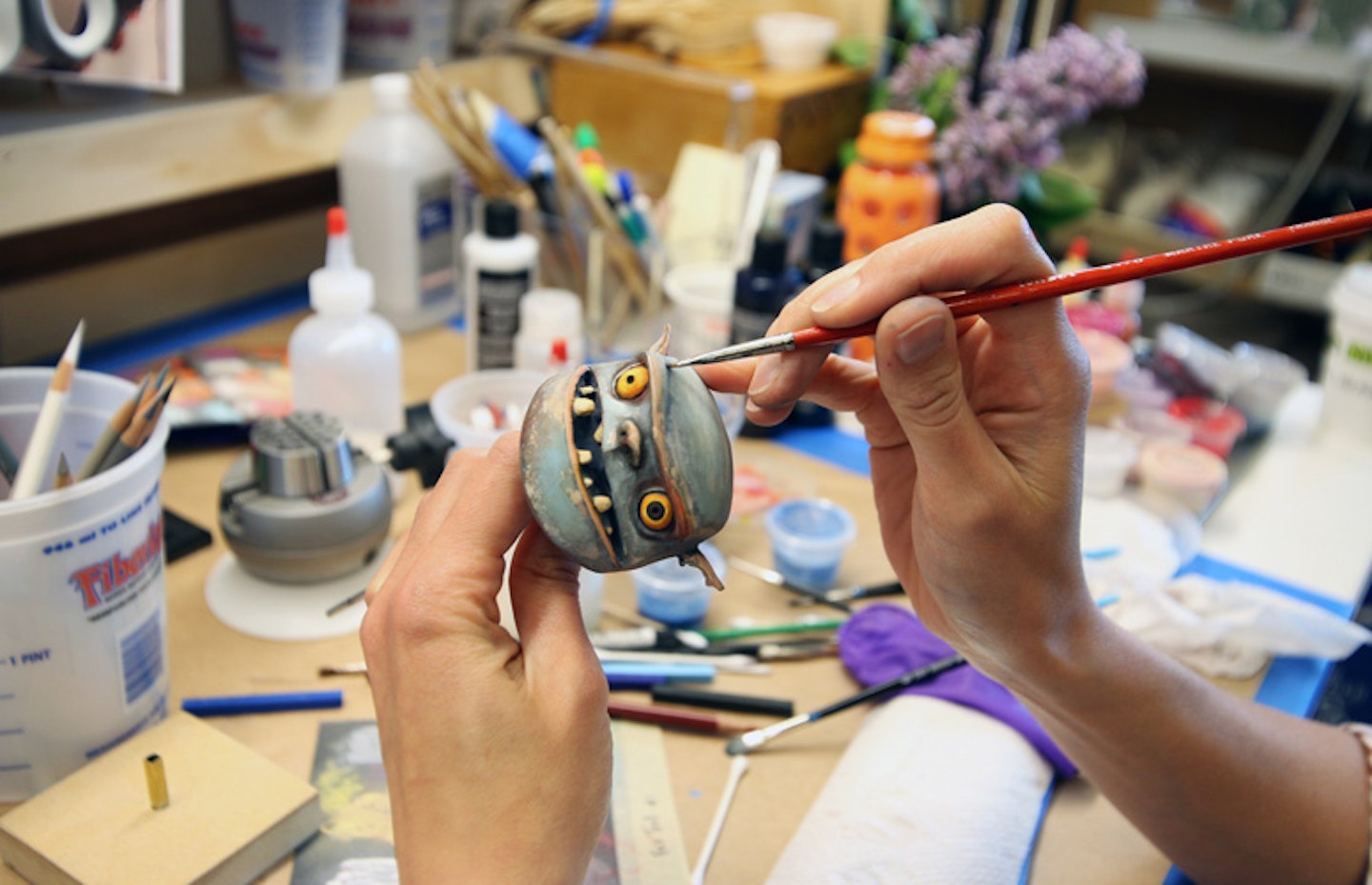
A painter puts the finishing touches on the head of Shoe. Photo: Mark Stewart Hughes / LAIKA, Inc.
A small element comes from Stacchi’s past: he was part of the team that worked on Henry Selick’s James And The Giant Peach in 1996. Though he was more focused on 2D elements of that production, he was able to absorb Selick’s working methods and designs for the characters, which carried through to Boxtrolls.

Florian Perinelle works with the Lord Portley-Rind puppet.Photo: John Leonhardt / LAIKA, Inc.
Among the more complicated aspects of stop-motion animation is the job of crafting the puppets and bringing them to life. And never was that more acute than when the directors decided to set a scene at a lavish dance party. “When you're writing, you turn off your production brain and don't worry about how you're going to do things,” says Annable. "We needed a scene where Eggs is a fish out of water amongst all these aristocrats. We originally did it as a tea party featuring Eggs, Winnie and her two parents. It was great and really funny but didn't feel big enough and the story changed such that Snatcher needed to come into this moment. We figured what could be better than a party, a waltz where he's about to make it to Portley-Rind but Snatcher tries to intervene. We said how cool it would be to do a waltz in stop-motion. We never considered the difficulty of executing it, which came up months later!”
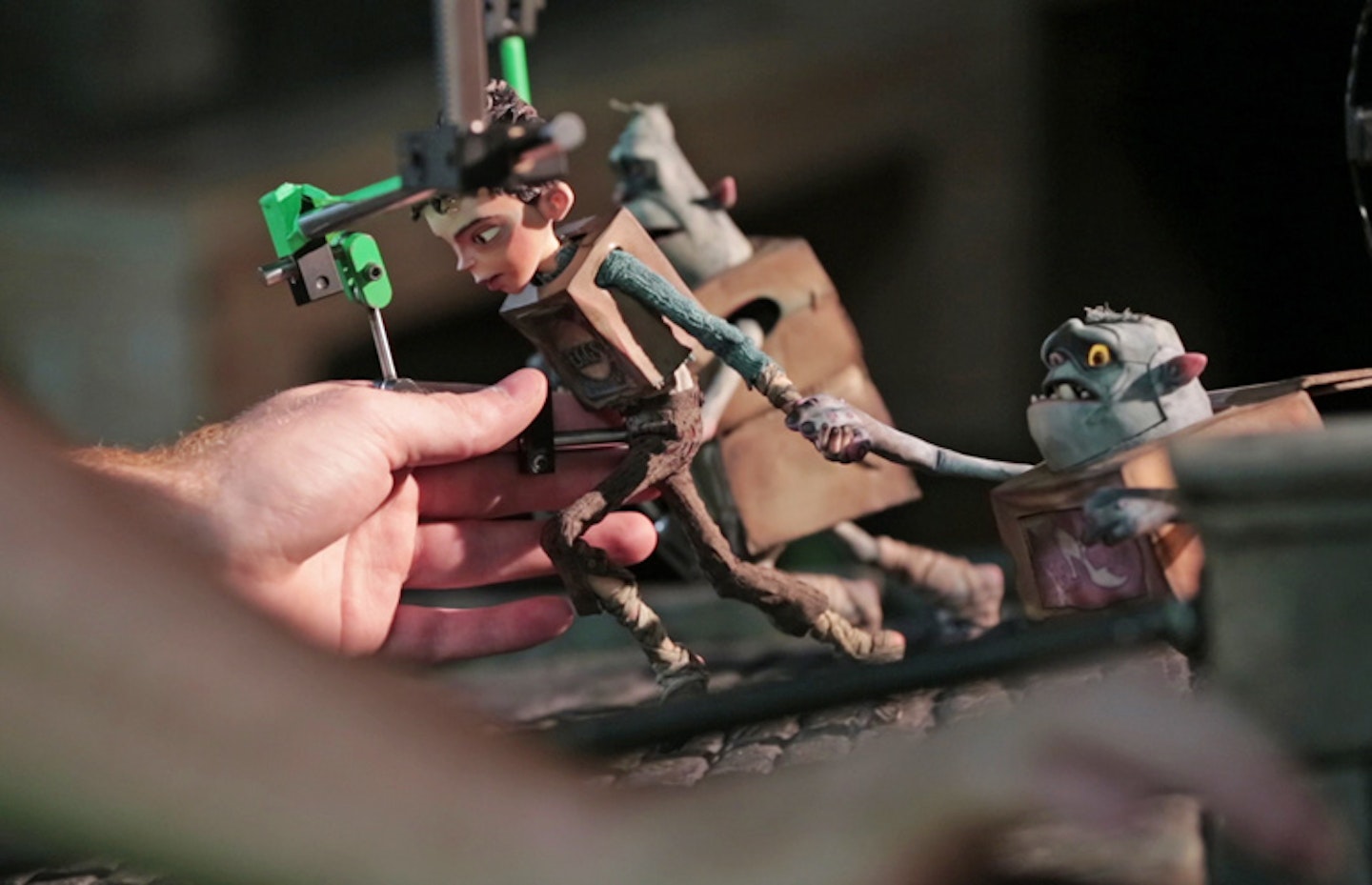
An animator working on the delicate process of the puppet’s movement. Photo: LAIKA, Inc.
The biggest issue in the scene? Having the puppets dance convincingly without creating years of work in separate legs. “There are no legs underneath those skirts, just an elaborate set of rigs, like a slinky to get the squash and stretch and up and down,” explains Annable. “And you'll notice they never rise such as you could see feet, because all you'd see is a bunch of wire coils!”
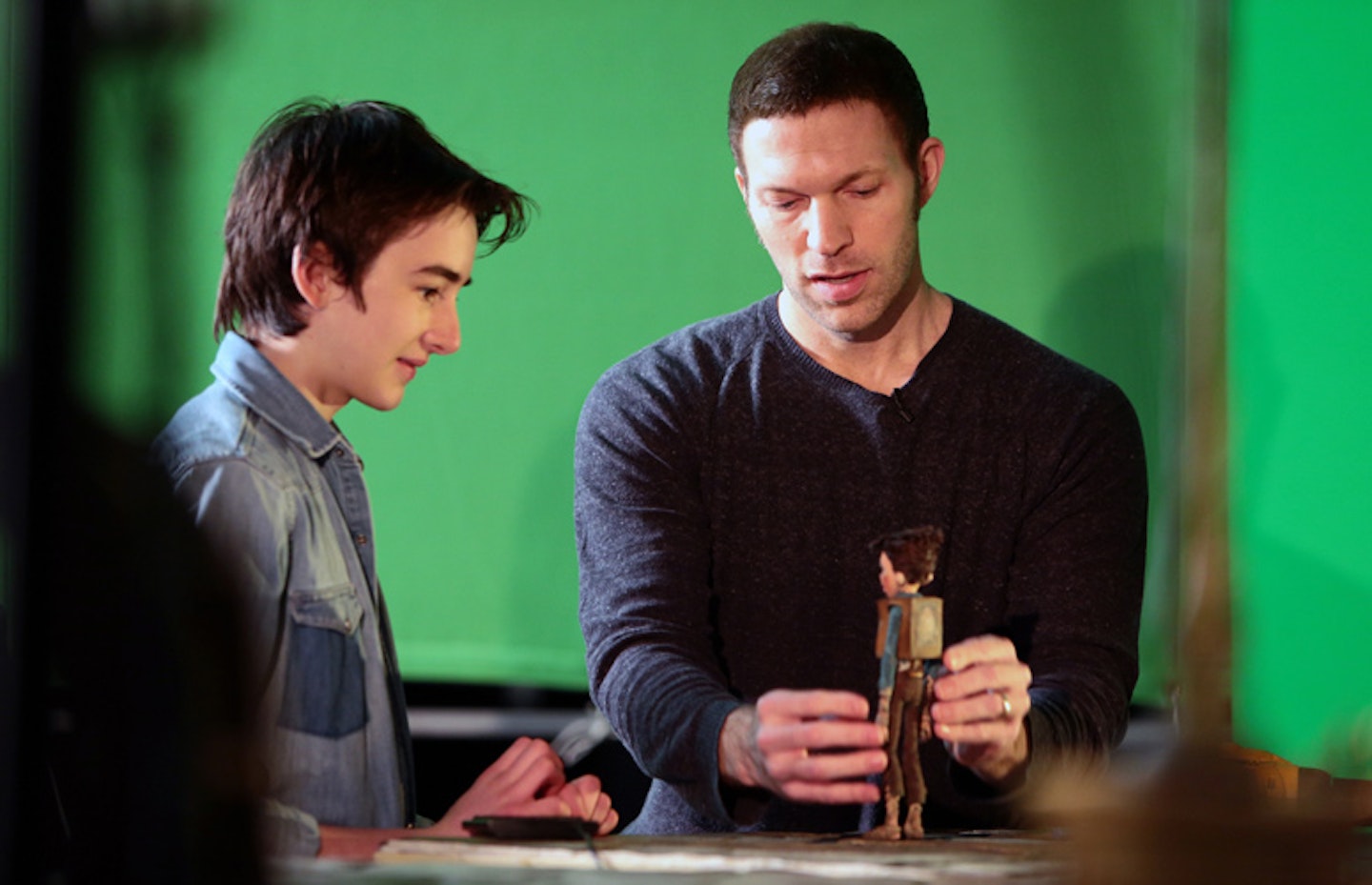
Isaac Hempstead-Wright visits with LAIKA CEO and Lead Animator Travis Knight. Photo: LAIKA, Inc.
“We still had some story elements up in the air when we started shooting,” laughs Stacchi. "Once (studio boss) Travis Knight figures we're at a point in the story where there are still things that need to be figured out but we'll be able to do that, they start the clock at that point, and you're in the situation where you're in these breakdown meetings. Usually it starts when you choose a sequence and that's the first breakdown. Then a week or two later there'll be another meeting. So a sequence has to be ready with all its dialogue recorded so you can begin making the faces. So the first couple are okay, because you've been working for a long time and there are a few sequences you are secure are going to be in the movie no matter what. It gets harder later on and you have a week before a breakdown sequence and it's not working yet.”
It wouldn’t surprise us if the meetings end up being called nervous breakdowns... “It's like cement that's beginning to set, and certain sequences are solidifying and [reducing] the flexibility left in those pockets you're trying to figure out, every step of the way,” says Annable. “You’re never finished, you just run out of time!”
brightcove.createExperiences();
